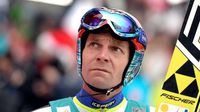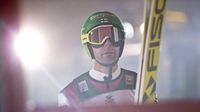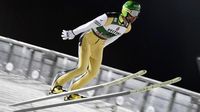Former ski jumping champion Janne Ahonen has publicly acknowledged that he knowingly exceeded the limits of allowed practices regarding competition suits during his sports career. This revelation comes as the ski jumping community is rocked by what has been dubbed the "suit scandal", particularly following incidents involving the Norwegian team at the World Championships in Trondheim.
Ahonen, now 47, stated in an interview with Norwegian broadcaster NRK, "I never wore anything on my suit that was not allowed, but when it came to size, I stretched the regulations and exceeded the limits." His admission highlights a troubling pattern, as he noted, "We were all at the limit and a little beyond." He confirmed that he was aware of the irregularities surrounding suit adjustments, adding, "Everyone knows what their suits look like," reflecting a culture of bending the rules in pursuit of competitive advantage.
This statement follows the disqualification of Norwegian athletes Marius Lindvik and Johann André Forfang during the World Championships due to manipulated suits, which were captured in covertly filmed videos. Both athletes, alongside other Norwegian jumpers and officials, have faced suspensions from competitions governed by the International Ski Federation (FIS). In the wake of these events, the Norwegian Ski Federation has publicly admitted to the fraud and issued apologies to fans.
Ahonen called for reform within the sport, suggesting that control over competition suits be taken out of the hands of the FIS. "Maybe there should be an external entity that controls the suits, like with doping," he proposed, emphasizing the need for independent oversight akin to that employed by the World Anti-Doping Agency. His proposal comes amid criticisms of the FIS's leniency in enforcing regulations.
The ski jumping history is now marred by these revelations. Ahonen, a five-time world champion and victor of the prestigious Four Hills Tournament, admitted that many athletes engaged in deceptive practices, albeit through different means. For instance, Swiss ex-world champion Andreas Küttel recently shared how he manipulated his suit's aerodynamics by applying hairspray to reduce air resistance.
Ahonen's recent statements spur an essential conversation on the integrity of ski jumping. Many in the sport, including Olympic champion Daniel-André Tande, have remarked on the prevalent culture of cheating, suggesting that it is an open secret that many athletes push the boundaries of allowed practices.
"It was a known and widespread phenomenon among jumpers," Ahonen stated, indicating that his experience reflects a larger issue within the sport. The public's reaction has since shifted to questioning the ethical responsibilities of sports federations in ensuring fair play.
In light of the ongoing suit scandal, which has significantly tainted the reputation of ski jumping, Ahonen's call for an overhaul of regulatory practices has raised eyebrows. His insistence that better controls are necessary aligns with growing demands for transparency in the sport, especially after recent incidents underscoring the complexities surrounding athlete compliance.
The fallout from the scandal has prompted the FIS to tighten their control measures, aiming to restore some level of credibility to the sport as they grapple with the implications of these admissions. Yet the effectiveness of these changes remains uncertain amid doubts regarding their commitment to enforcing stringent regulations.
Moreover, the ongoing investigations have sparked a wave of soul-searching within competitive ski jumping circles, as many question how deep-rooted these manipulative practices are and how they can be effectively purged from the sport.
As Ahonen reflects on his past, his transparent recognition of wrongdoing opens a broader discussion about accountability in ski jumping and the ethical standards expected of its athletes. His testimony exemplifies the challenges facing professional sports as they attempt to balance competition with fairness, integrity, and the pressures to perform.
With this scandal unfolding, the international ski jumping community may face calls for systemic change, as stakeholders from athletes to fans seek reassurance that future competitions will be conducted under fair and rigorous oversight.
As the sport seeks to move forward from this dark chapter, Ahonen's admission highlights an urgent need for reevaluation, not just of the rules governing suits, but of the overall landscape of competitive fairness in ski jumping.








